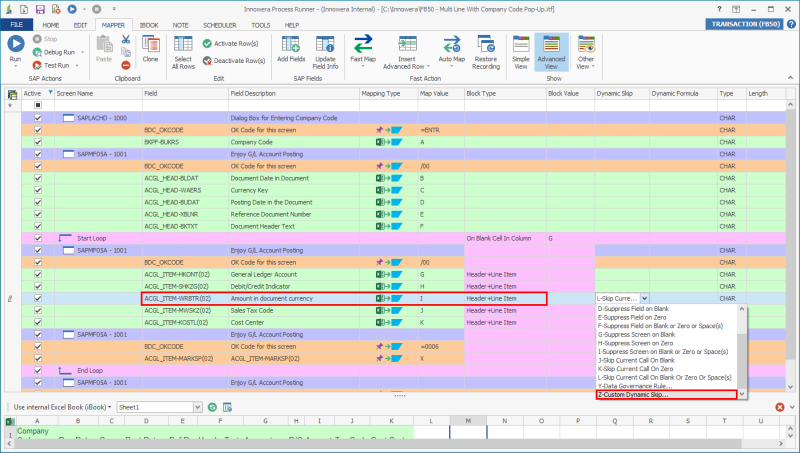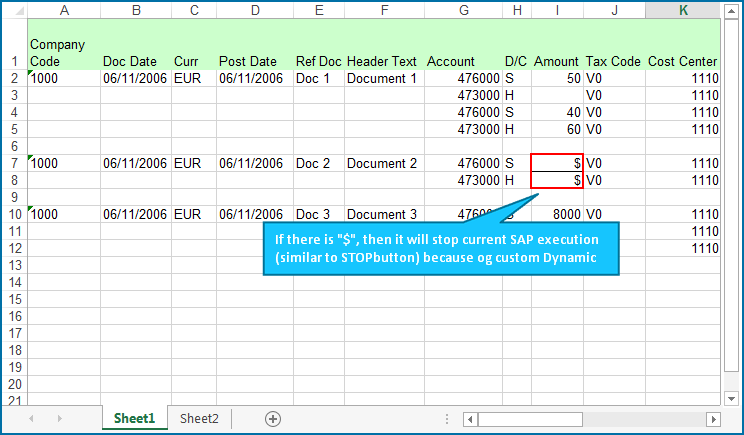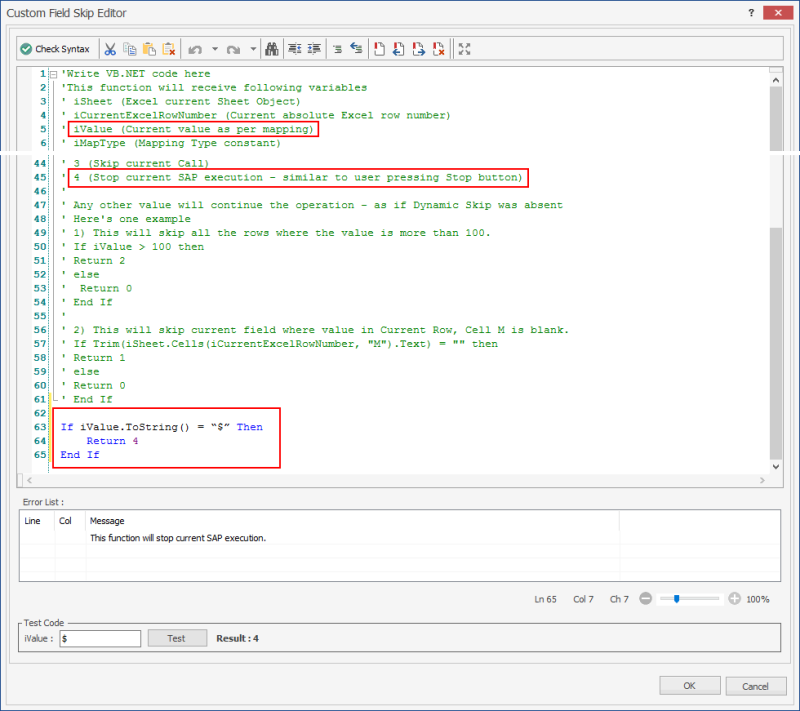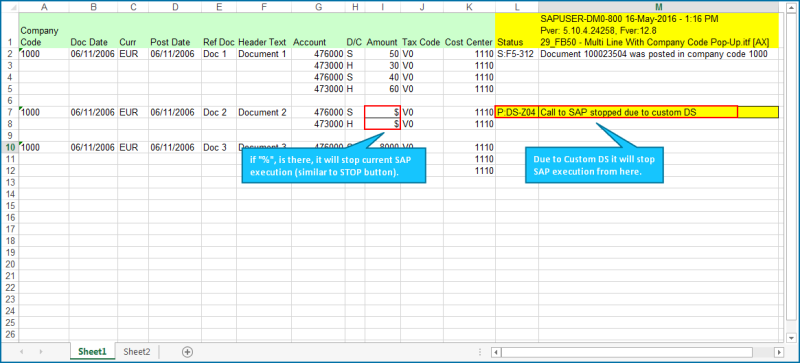Z-Custom DS on Field
The above dynamic skips mentioned in previous chapter were the built in DS types provided in Mapper. To check the values “on the Fly” during run-time and perform some action based on that, you can use Custom DS.
Select Custom Dynamic Skip from the drop-down for amount field.

Custom DS screen will pop-up. This is a small IDE, where users can write their VB.Net code to perform various Run-Time actions based on the data they put in their excel data sheet.
Besides the inbuilt DS types, custom DS also supports various options.
Let us understand the pre-defined variables and return types that can be used in Custom DS on field with VB.Net code.
|
Variables |
Description |
|---|---|
|
iSheet |
Current excel sheet |
|
iCurrentExcelRowNumber |
Current absolute excel row number |
|
iValue |
Current value pertaining to mapping |
|
iMapType |
Mapping Type |
|
iMapValue |
Mapped Value |
|
iExcelLogColumn |
Excel Log column |
|
iExcelStatusColumn |
Excel Status column |
|
iLoopExcelHeaderRow |
Looping header row |
|
iLoopExcelEndRow |
Looping End Row |
|
IsTestRun |
Check whether Current Run Is Test Run |
|
IsLineLevelTestRun |
Whether Line Level Test Run or Whole Document Test Run |
|
IsDRSActive |
Is DRS Active in Current File |
|
DRSBlockValue |
DRS Block length |
|
IsDRSBalancingRow |
Whether current Executing Row Is DRS Balancing Row |
|
IsRowSelectionPass |
Whether the row selection passed in analyzing/preparing rows for Run |
|
IsHeaderLevelTestRun |
Whether Line Level Test Run is executing And Header Row is Executing in Loop |
|
iReturnID |
Return ID in Log/Status column |
|
iReturnMessage |
Return Message in Log/Status column |
|
GVar1, GVar2, GVar3, GVar4, GVar5 |
Object variables **These variables are valid only per call and will be reset once the call is finished. These are object variables, so you can store any value (eg. Int, float, text..etc.) in that. |
|
GVars |
Hash table object |
|
Return Types: (Any other value will continue the operation as if Dynamic Skip was absent) |
0: Default return value. This will tell Process Runner to send the row to SAP and not suppress it. 1: Suppress or do not send the field to SAP. This will tell Process Runner to suppress a row and will not send it to SAP. 2: Skip current excel row. This will tell Process Runner to skip a row and not send it to SAP. 3: Skip current call. This will skip one entire call to SAP. 4: Stop current SAP execution. Similar to pressing Stop button in Process Runner. |
|
SAPProcess |
Return SAP Transaction/BAPI/Table name |
|
SAPSystem |
Returns logged-in SAP System ID |
|
SAPClient |
Returns logged-in SAP Client |
|
SAPUser |
Returns logged-in SAP User |
|
SAPLang |
Returns logged-in SAP Language |
|
SAPSystemNo |
Returns logged-in SAP SystemNo |
Example:
If Trim(iSheet.Cells(iCurrentExcelRowNumber,"i").Text) = "31"
Return 0
else
Return 1
End If
The above code tells Process runner if there is 31 in column I for the current row in current sheet then only execute (Return 0) the row else suppress (Return 1) it.
Here we will see a small example that if we encounter $ in amount field it should stop the transaction.

iValue contains the field value for which we have defined Custom DS.
It’s “amount” here.
Following is the VB.Net code.
If iValue.ToString() = “$” then
Return 4
End If
Returning 4 will stop the transaction there itself.
To test your code, enter $ in iValue & click on Test button.
It will display Result: 4 (the return value).
Look at the description below it.
** If there is any Syntax error in your code it will also notify about that.

Click OK button. Run it.

For information about how to restrict a Process file to be run in a particular SAP system using Custom Dynamic Skip, see Restrict Access to Specific SAP System.
